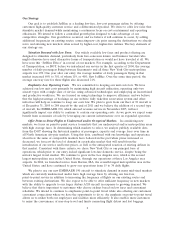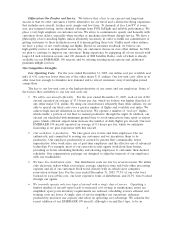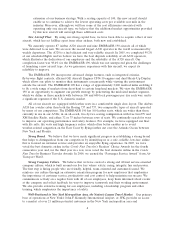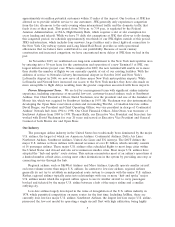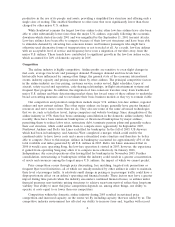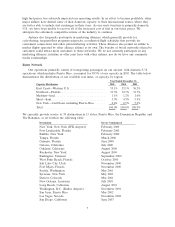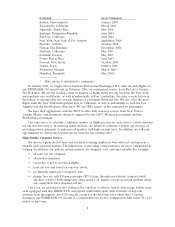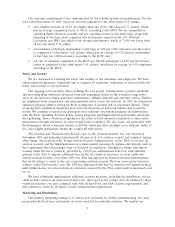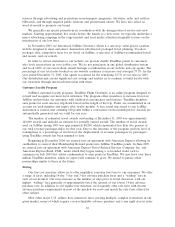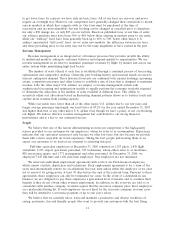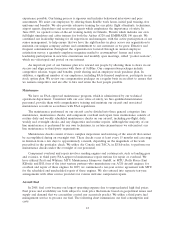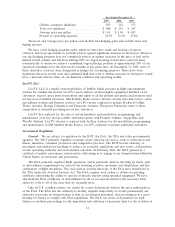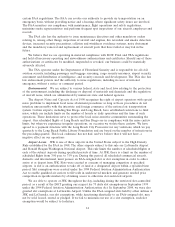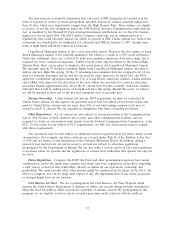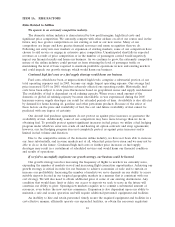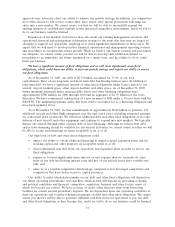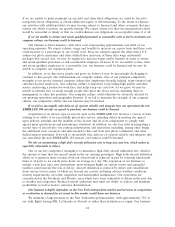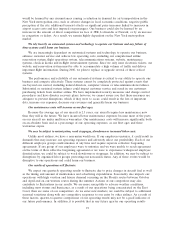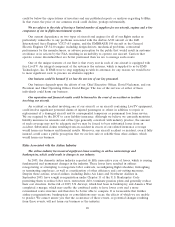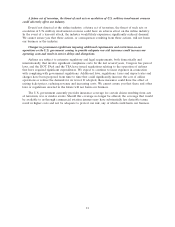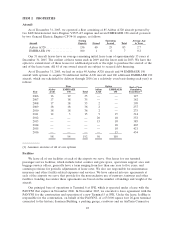JetBlue Airlines 2005 Annual Report Download - page 20
Download and view the complete annual report
Please find page 20 of the 2005 JetBlue Airlines annual report below. You can navigate through the pages in the report by either clicking on the pages listed below, or by using the keyword search tool below to find specific information within the annual report.experience possible. Our hiring process is rigorous and includes behavioral interviews and peer
assessments. We assist our employees by offering them flexible work hours, initial paid training, free
uniforms and benefits. We also provide extensive training for our pilots, flight attendants, technicians,
airport agents, dispatchers and reservation agents which emphasizes the importance of safety. In
June 2005, we opened a state-of-the-art training facility in Orlando, Florida which includes our own
full flight simulators and cabin trainers for both the Airbus A320 and EMBRAER 190 aircraft. We
continued our leadership training for all supervisors and managers, with the active participation of our
senior management, to help ensure that we have the right leaders in place across our organization to
maintain our unique company culture and commitment to our customers as we grow. Effective and
frequent communication throughout the organization is fostered through an annual employee
satisfaction survey, a quarterly employee magazine mailed to crewmembers’ homes and active
leadership participation in new hire orientations and monthly open meetings, called ‘‘pocket sessions’’,
which are videotaped and posted on our intranet.
An important part of our business plan is to reward our people by allowing them to share in our
success and align personal successes with those of JetBlue. Our compensation packages include
competitive salaries, wages and benefits, profit sharing and an employee stock purchase plan. In
addition, a significant number of our employees, including FAA-licensed employees, participate in our
stock option plan. We review our compensation packages on a regular basis in an effort to ensure that
we remain competitive and are able to hire and retain the best people possible.
Maintenance
We have an FAA-approved maintenance program, which is administered by our technical
operations department. Consistent with our core value of safety, we hire qualified maintenance
personnel, provide them with comprehensive training and maintain our aircraft and associated
maintenance records in accordance with FAA regulations.
The maintenance performed on our aircraft can be divided into three general categories: line
maintenance, maintenance checks, and component overhaul and repair. Line maintenance consists of
routine daily and weekly scheduled maintenance checks on our aircraft, including pre-flight, daily,
weekly and overnight checks, and any diagnostics and routine repairs. Although the majority of our
line maintenance is performed by our own technicians, in certain circumstances we subcontract our
line maintenance to third-party organizations.
Maintenance checks consist of more complex inspections and servicing of the aircraft that cannot
be accomplished during an overnight visit. These checks occur at least every 15 months and can range
in duration from a few days to approximately a month, depending on the magnitude of the work
prescribed in the particular check. We utilize Air Canada and TACA, in El Salvador, to perform our
maintenance checks under the oversight of our personnel.
Component overhaul and repair involves sending engines and certain parts, such as landing gear
and avionics, to third party FAA-approved maintenance repair stations for repair or overhaul. We
have utilized Pratt and Whitney, MTU Maintenance Hannover GmbH, or MTU, Rolls Royce East
Kilbride and IHI, four of the joint venture partners who manufacture our A320 aircraft engines, for
overhaul and repair of these engines. In 2005, we commenced a ten-year service agreement with MTU
for the scheduled and unscheduled repair of these engines. We also entered into separate ten-year
arrangements with other service providers for various airframe component repairs.
Aircraft Fuel
In 2005, fuel costs became our largest operating expense due to unprecedented high fuel prices.
Fuel prices and availability are both subject to wide price fluctuations based on geopolitical issues and
supply and demand that we can neither control nor accurately predict. We utilize a third party fuel
management service to procure our fuel. The following chart summarizes our fuel consumption and
costs:
12


